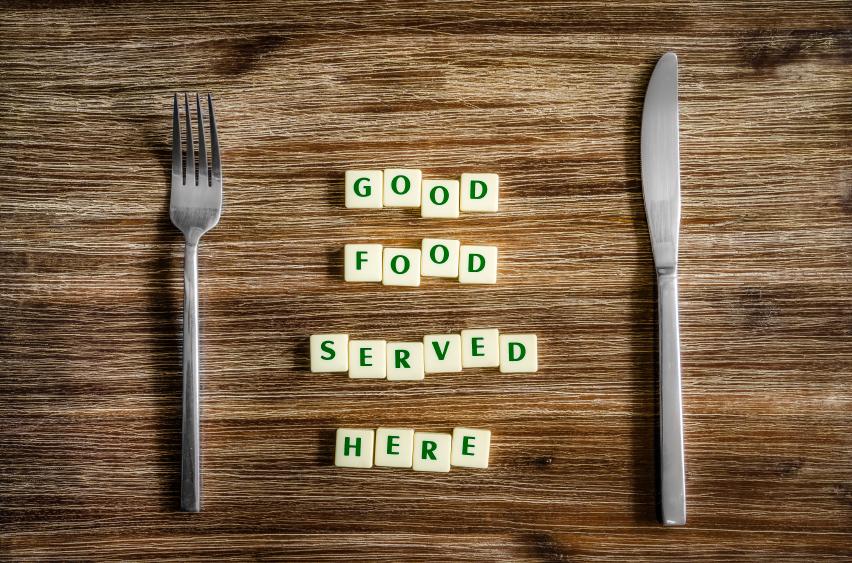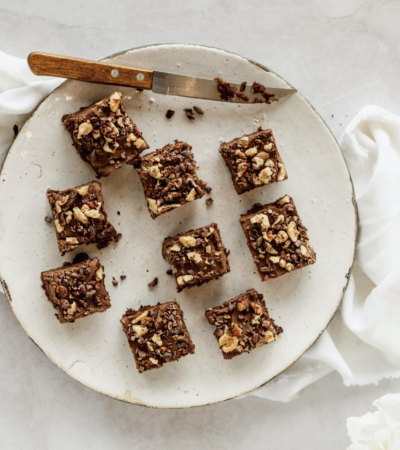words by Zoe Louise Cronk
Being a self-confessed foodie, dining in restaurants is one of my favourite things to do. Not only is it a sociable experience and a chance to forgo the washing up, but it also provides the perfect opportunity to try new flavour combinations, sample international cuisines and be inspired to create your own culinary creations. The only problem? Staying healthy. Indulging in an occasional treat is part and parcel of remaining aboard the ‘healthy wagon’, but when eating out, it’s important to remember that there’s a big difference between a small treat, and three courses of bad-for-you fats and sugars that will leave you bloated, sluggish and sallow-skinned.
Thankfully though, your days of ordering a green salad with no dressing are over. We’ve enlisted the help of registered dietitian and nutritionist Sue Baic MSc RD RNutr to provide some easy-to-follow tips on how to stay healthy when dining out, without compromising on foodie satisfaction. As an active member of the British Dietetic Association and founder of nutrition consultancy Nutrition Basics, with ten years experience as a lecturer in Nutrition and Public Health at the University of Bristol, Sue is well-equipped with the knowledge to help you (and me!) enjoy restaurant meals guilt-free.
Plan And Prepare
Dining out is usually planned in advance, so try to compensate earlier in the day for the influx of less healthy foods that you’re likely to consume that evening by reducing your carb intake and adding more fruit and veggies into breakfast and lunch. However, lightening your meals should not mean you arrive at the restaurant absolutely starving, as perusing menus whilst ravenous will open the door to culinary overexcitement, over-ordering and ultimately, over-eating. “It’s like going food shopping on an empty stomach!” explains dietitian Sue. “We buy or eat more when we see the food!”. To prevent this, she recommends eating “a piece of wholegrain or seeded toast, fruit or a yoghurt,” shortly before heading to the restaurant. “A glass of water will also help take the edge off,” she adds. By arriving hungry but not famished, you’ll be able to scan the menu for lighter options without being distracted by the processed carbs and drool-worthy desserts, and it will hopefully help you avoid giving into the unhealthy cravings of your growling tum too!
Two Is Enough
Unlike your average at-home meal, it is socially acceptable when dining out to indulge in three filling courses…plus bread…and cheese…and coffee, and so on. For most of us however, three courses is far more than we need, and we end up leaving the restaurant stuffed to the brim, so try to recall that uncomfortably full feeling when contemplating your meal choice and stick to two courses rather than three. Quite often, the ingredients that feature in starters are also available in the main plates (with my favourite, mussels, being a common example), so look out for main dishes that include your favourite foods to avoid feelings of starter deprivation. It’s also good to note that the hungrier you are; the more flavoursome your meal will taste, so save your enjoyment for your chosen dishes rather than filling up on pre-meal bread. However, we’ve all been there when the dish descriptions are simply too mouth-watering to resist, so fall back on Sue’s suggestion of opting for “either a starter or dessert, not both, or share with a partner.” Twice the taste, half the guilt!
Consider The Options
More and more restaurants are beginning to offer a healthier section on their menus, sometimes highlighting the fat content or dishes that contain superfoods. However, when these aren’t available, a vegetable or broth-based soup is a good starter choice as they’re filling yet light and (usually) full of nutrients. Alternatively, Sue advocates ordering “extra vegetables or a side salad to go with your meal or as a starter to help fill you up.” As for the main course, “dishes that are steamed, braised, grilled or baked” are Sue’s suggestion as they tend to be less fatty, but with more nutritional benefits. She warns dieters and health-conscious individuals to “watch out for anything pan-fried, deep-fried, sautéed, flambéed or in pastry,” and recommends “tomato-based sauces rather than cheesy or creamy types.” She also advises choosing “lean grilled meat, fish or chicken,” adding that, “Dishes with meat can be high in fat, so trim excess fat and take the skin off poultry.” More of a Chocolate Charlie than a Savoury Sally? Skip the starter and save room for dessert, keeping an eye out for Sue’s recommended “sorbet, yoghurt or fruit-based puddings such as baked apple or fruit salad” to sate your stomach’s sweet tooth. However, a lack of healthy options doesn’t mean the evening ends in misery; simply follow Sue’s advice: “Share a dessert and go easy on the cream!”
Ask For Alternates
When dining in a ‘good’ restaurant where each dish is prepared fresh for the diner rather than being pre-made and reheated, waiters and chefs will be happy to make small adjustments to suit your needs. You should never feel that you’re “being a nuisance” by requesting slight alterations, so take a leaf out of Goldilocks’ book and make sure what you order is “just right.” The worst case scenario is that chefs won’t be able to cater to your request, so have a back-up dish in mind just in case. The most common modification involves cooking style, so feel free to ask, for example, for your rice to be steamed or boiled rather than fried. Even this small change, Sue reveals, could mean a difference of “about 6g fat per portion.” Worth saving, don’t you think!? “Don’t be afraid to ask for sauces or salad dressing on the side so you can serve yourself and add them sparingly,” continues Sue, who also proposes “substituting fatty items for healthy alternatives such as jacket or boiled potatoes, or rice or salad instead of chips or roast potatoes.”
Leave It or Take It Away
It may sound obvious, but resisting the temptation to over-eat is the biggest challenge for diners like me. It feels like sacrilege not to finish your meal when your plate is piled high with delectable flavours, and because you are paying for it, you feel you must consume every morsel, no matter how full you might be. Sue’s words of wisdom? “Don’t be afraid to leave what you don’t want or don’t need. Eat slowly and stop when you are full.” And there’s no shame in a doggy bag! Once you’ve had enough, simply ask the waiter to wrap up the rest so you can enjoy it the following day. Not only does this spread your naughtiness across two days, but it also gives you something to look forward to the morning after! Heed our advice and you’ll emerge from the restaurant pleased that you did not give into the unhealthy devil on your gastro-shoulder. Over-eating, however, will likely leave you feeling uncomfortably full and remorseful for your overindulgence; two post-meal traits that certainly do not lead to a healthier, happier you! Please remember though fellow foodies, that if you do decide to treat yourself and tuck into whatever is tempting your taste buds, it is not the end of the world. There is always another day and another workout to relieve the guilt. Food is for enjoying. You only live once, after all!














